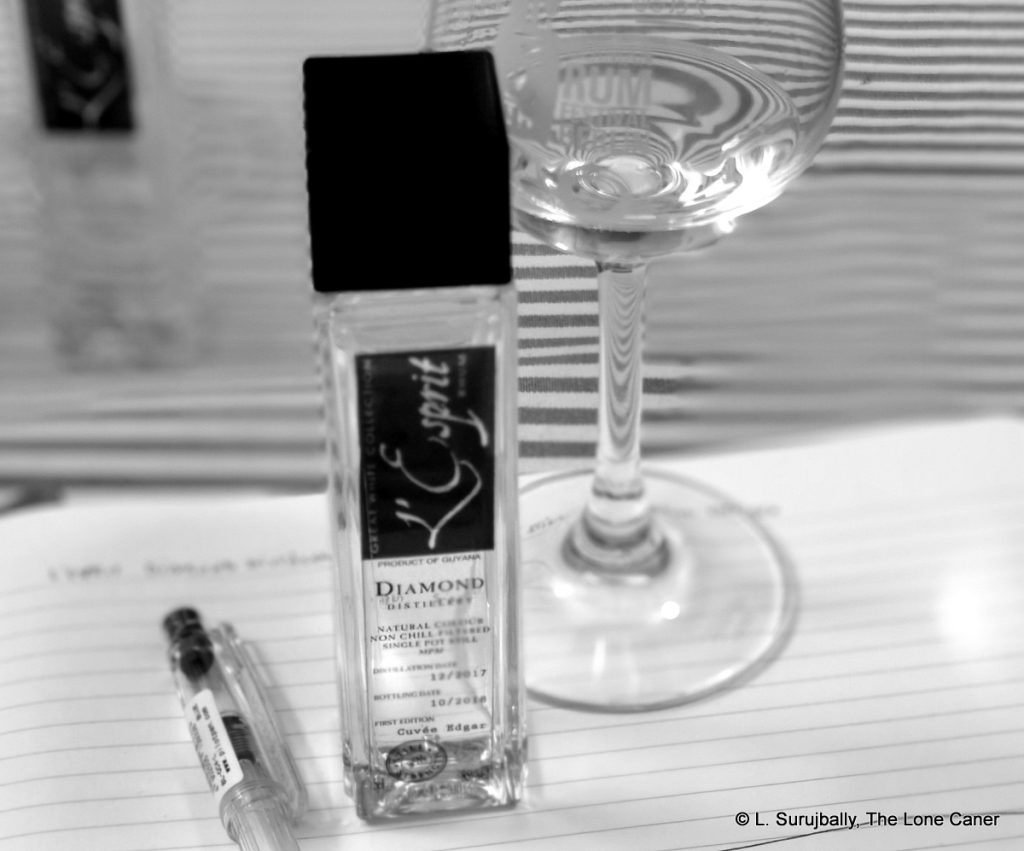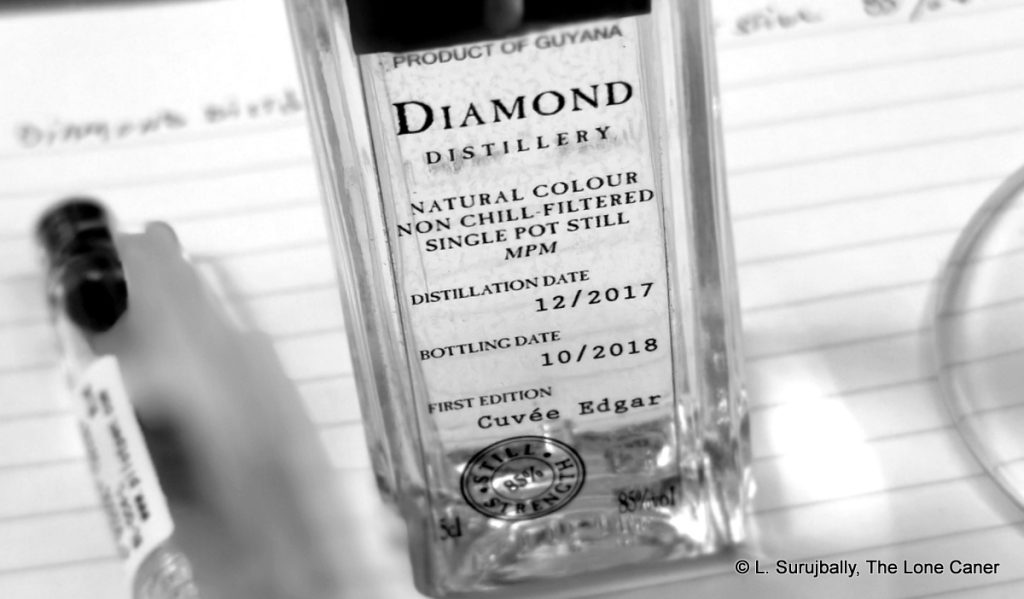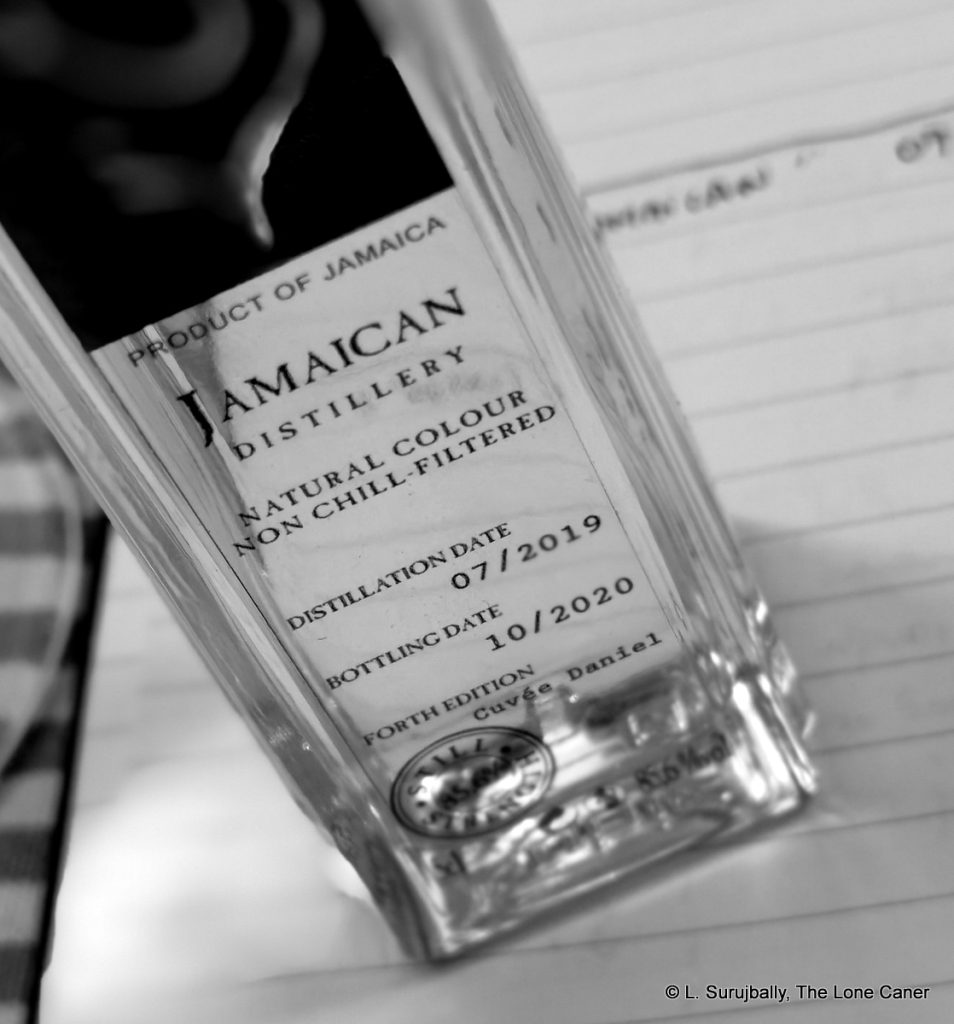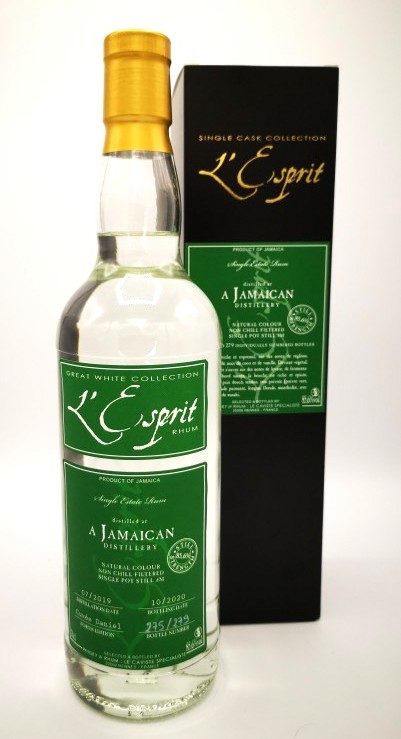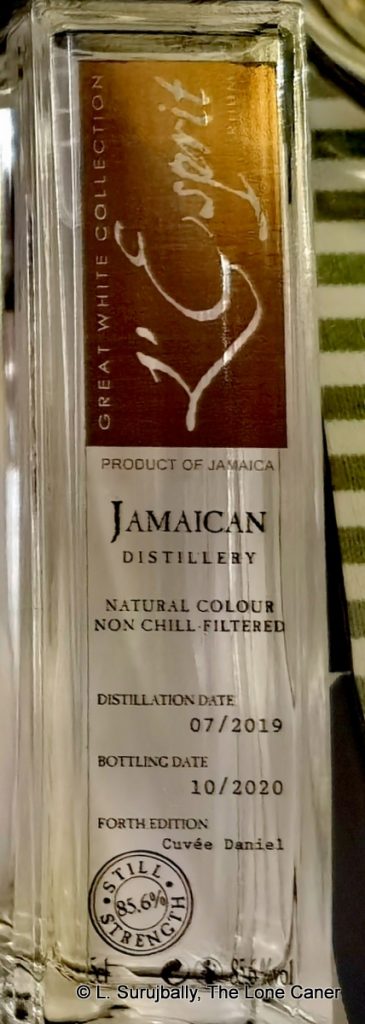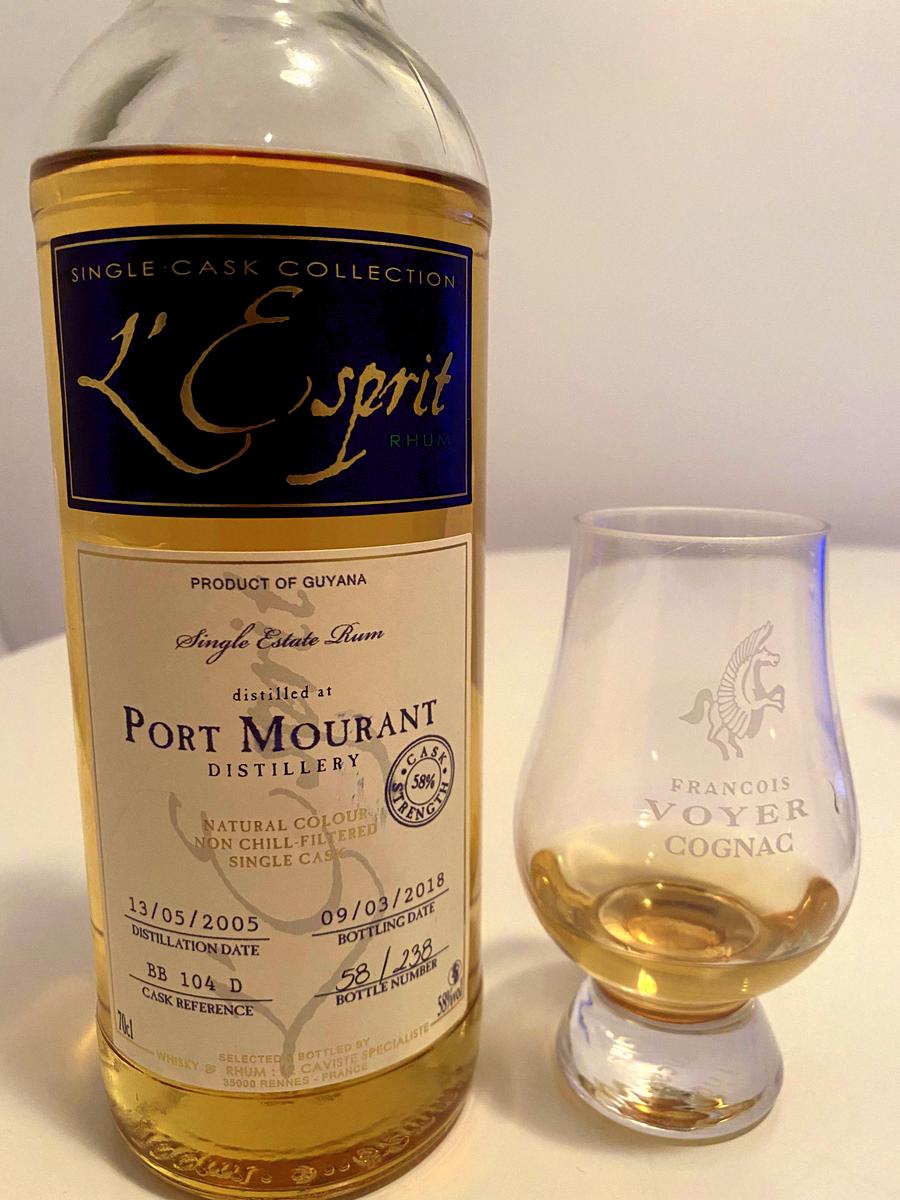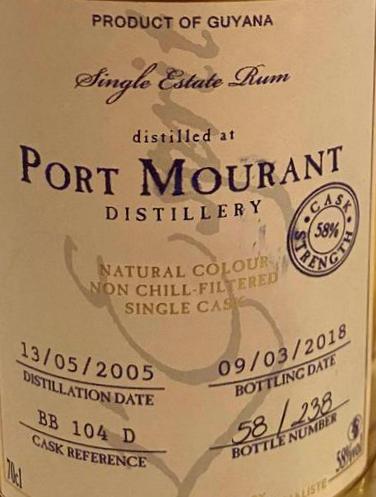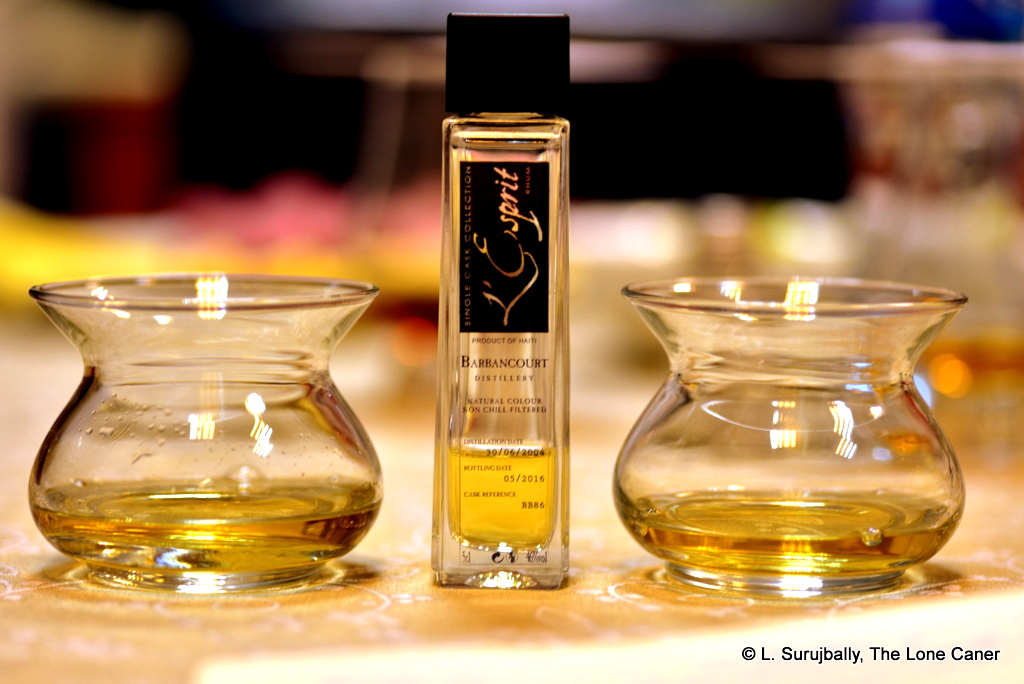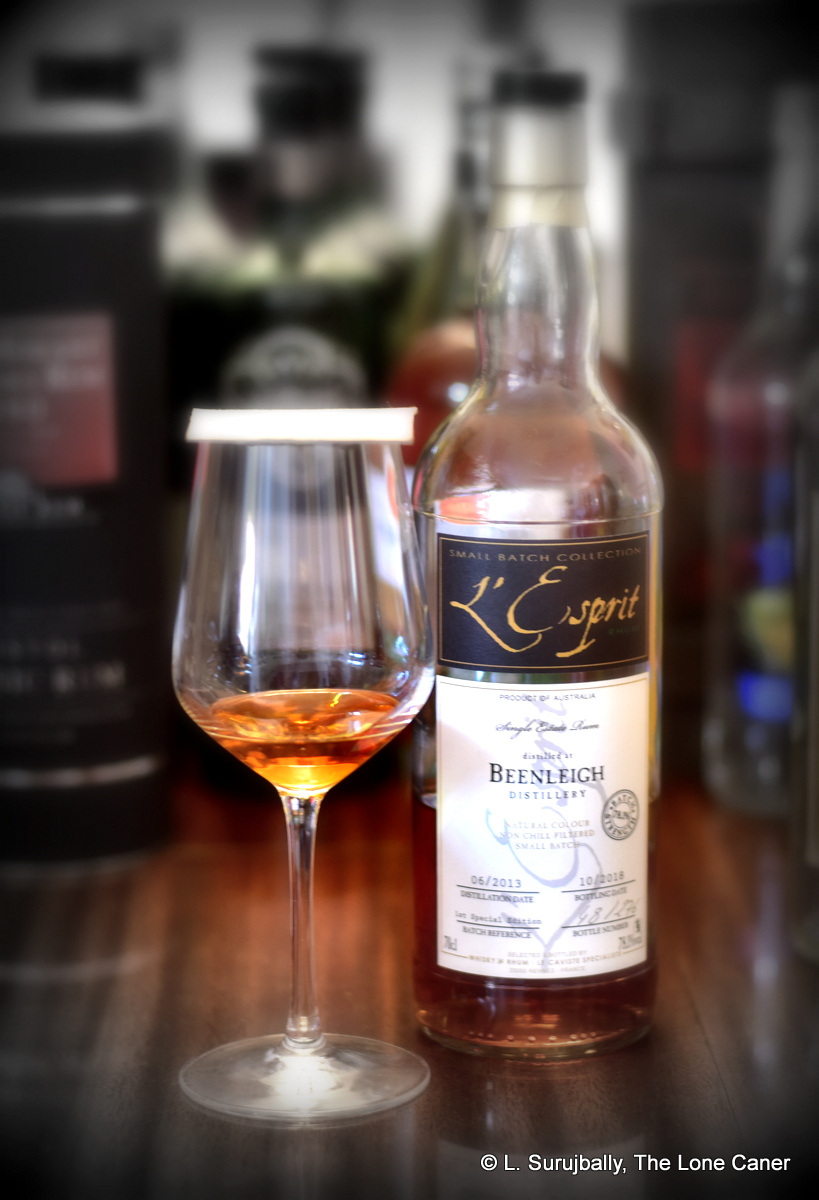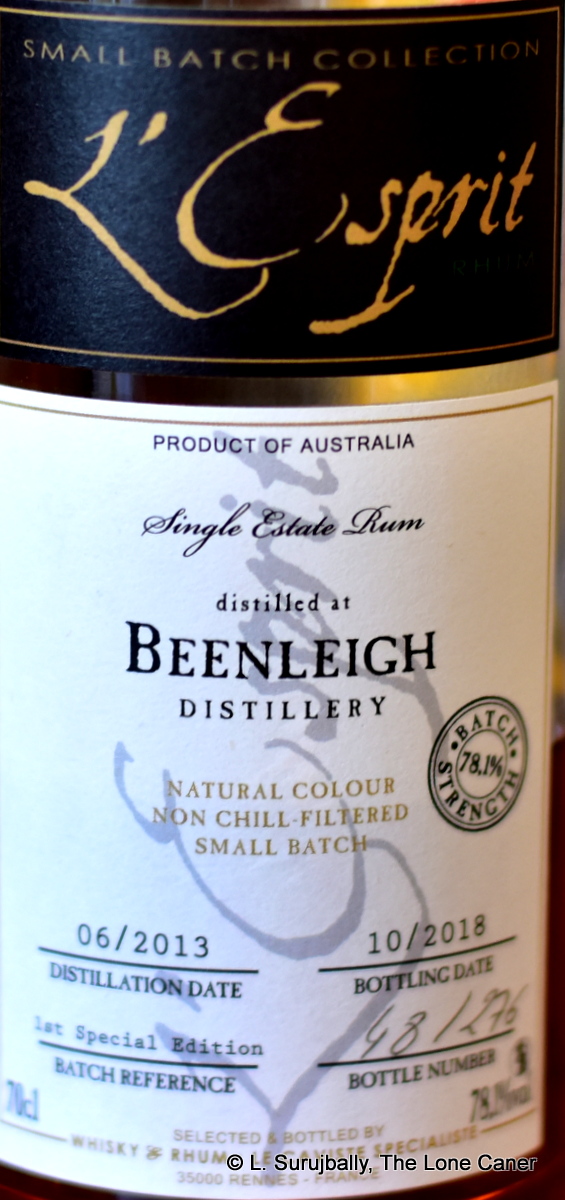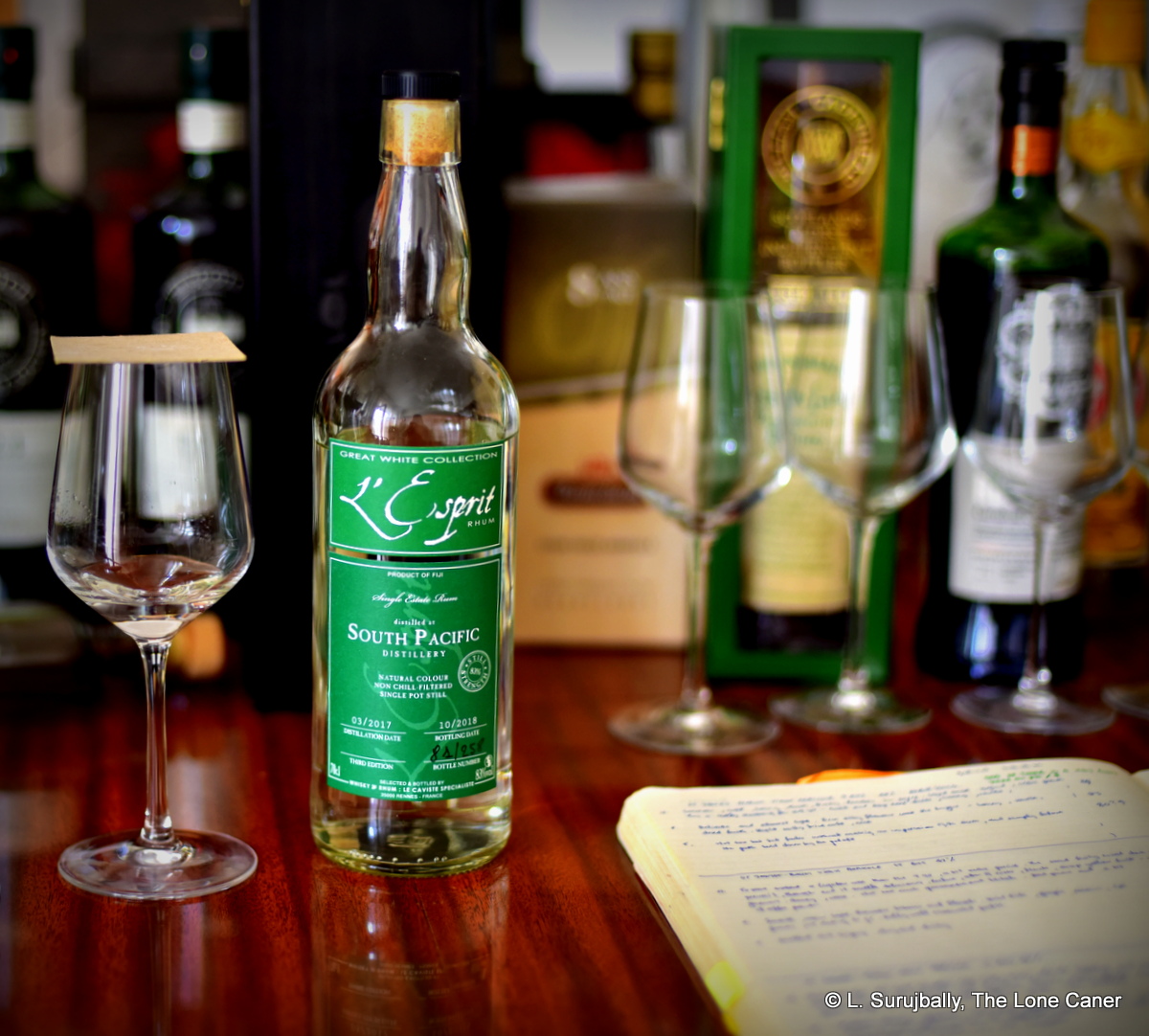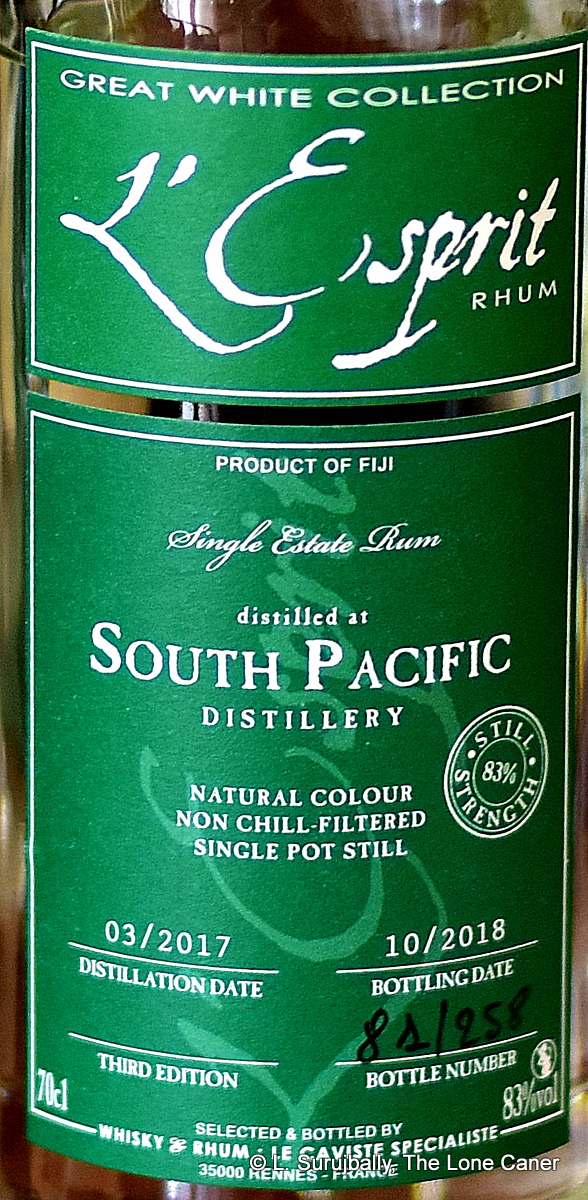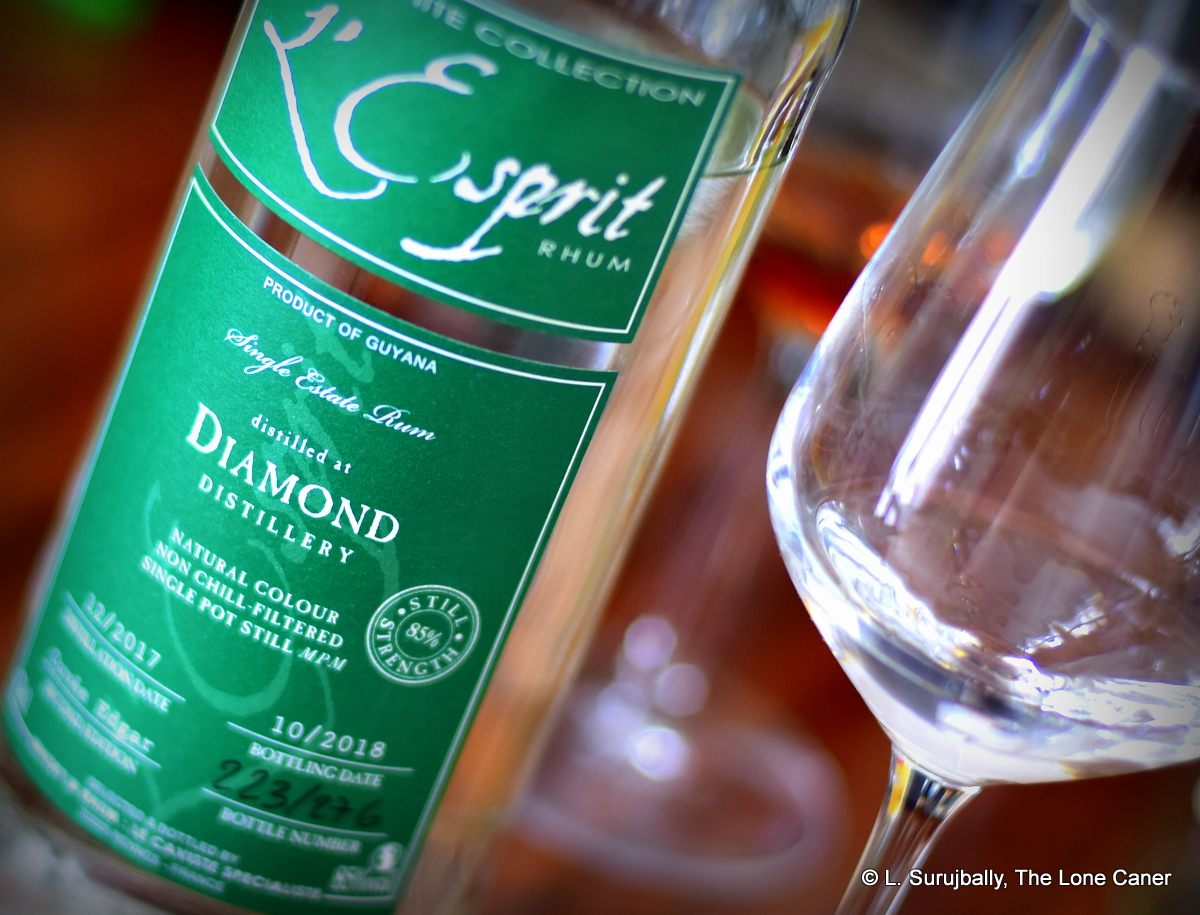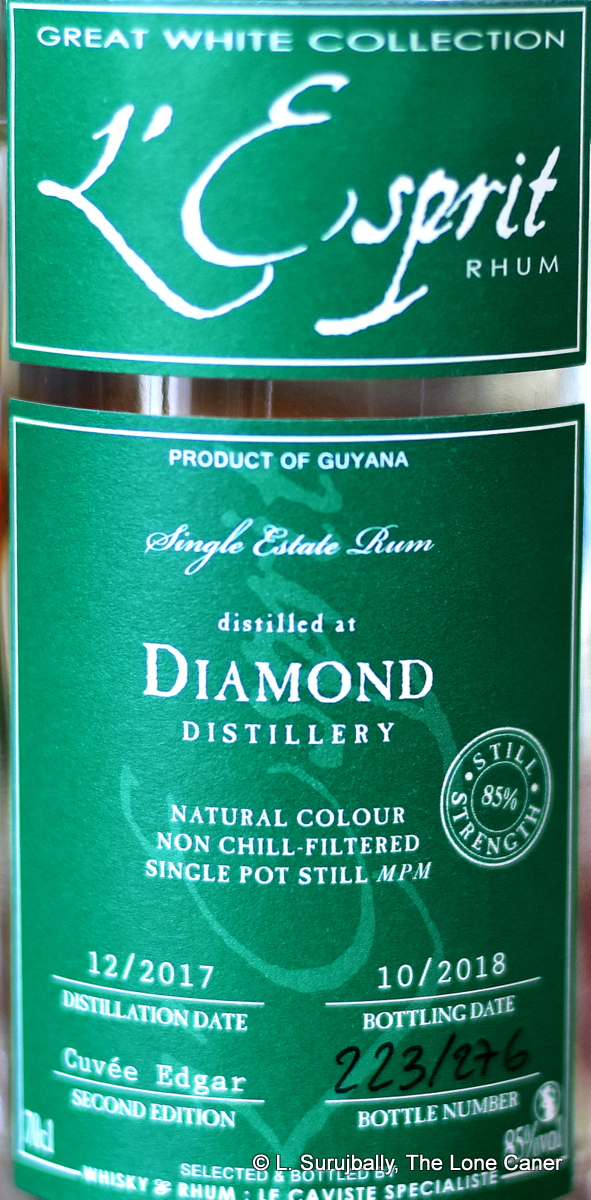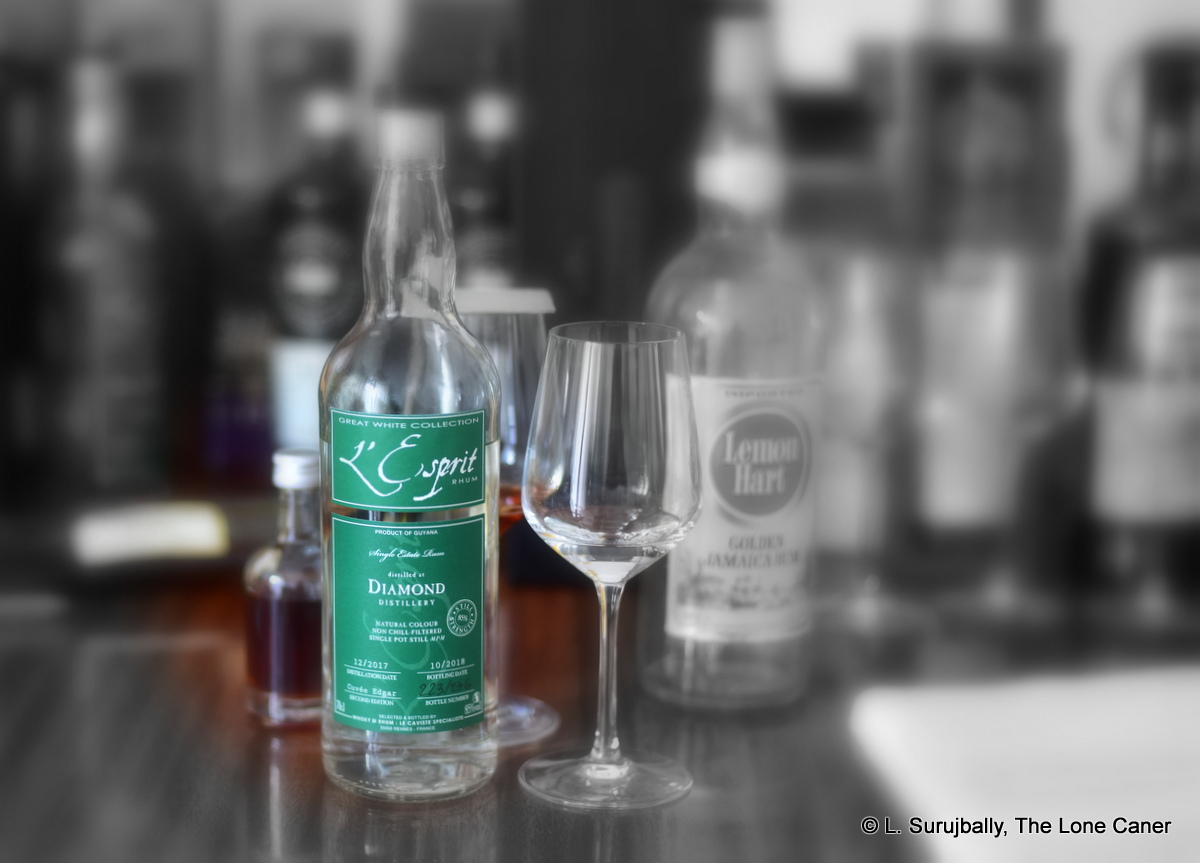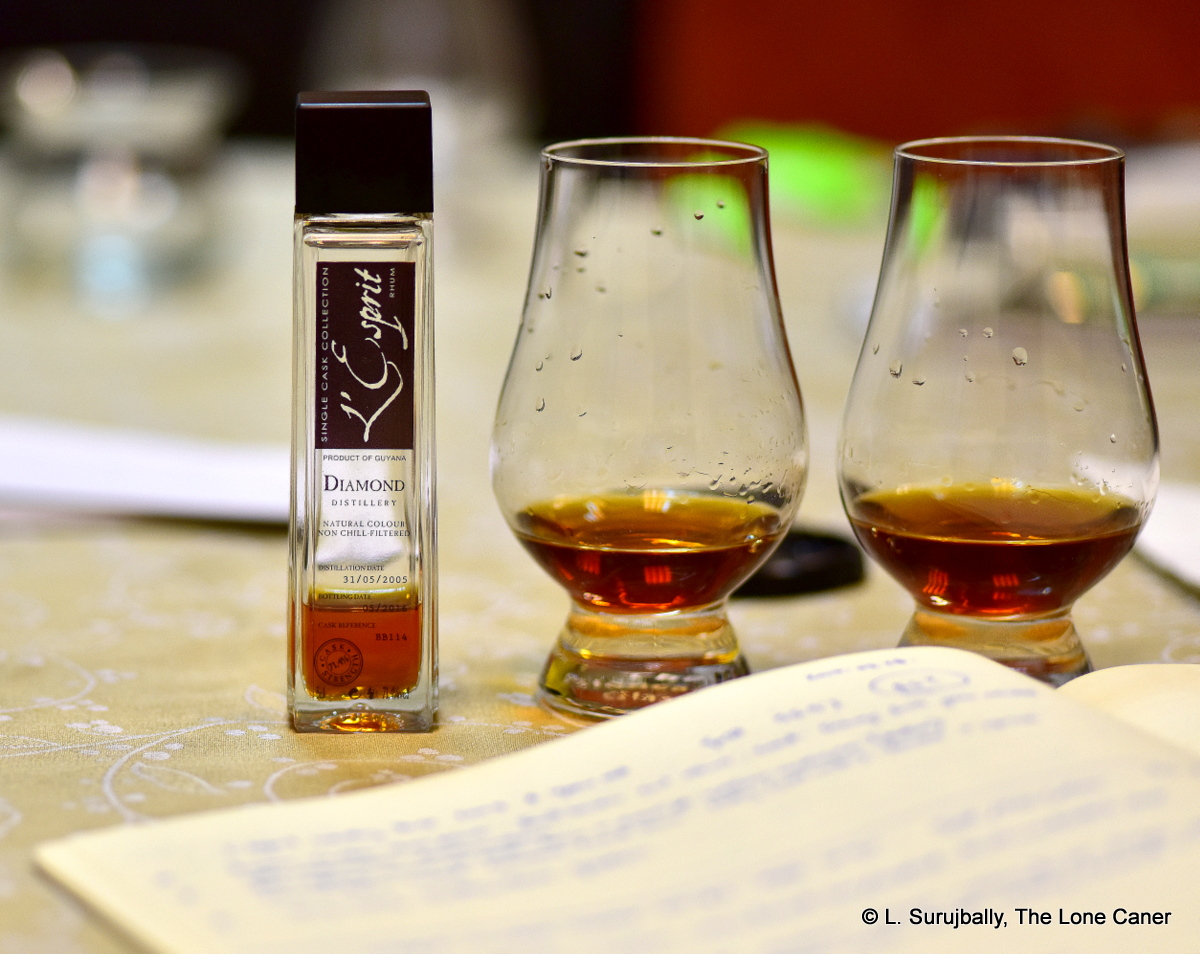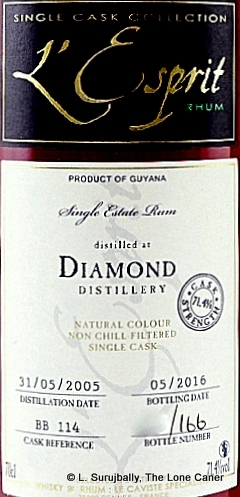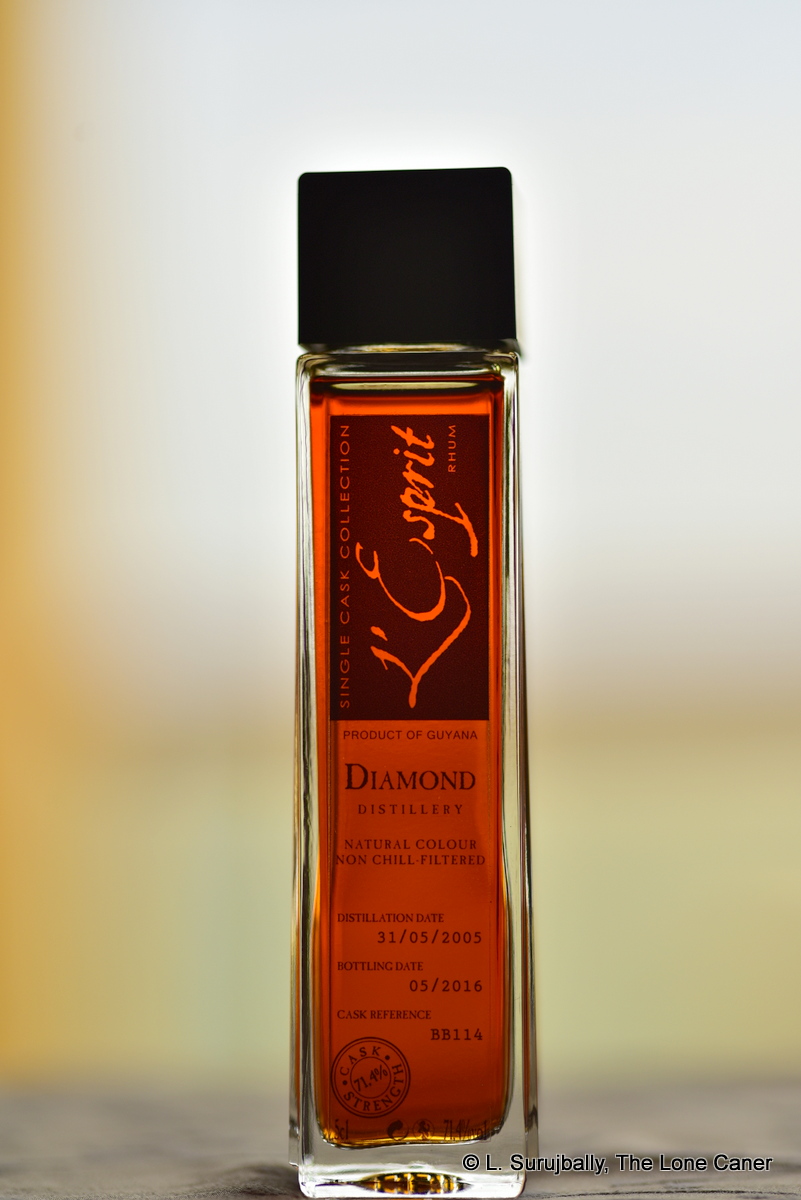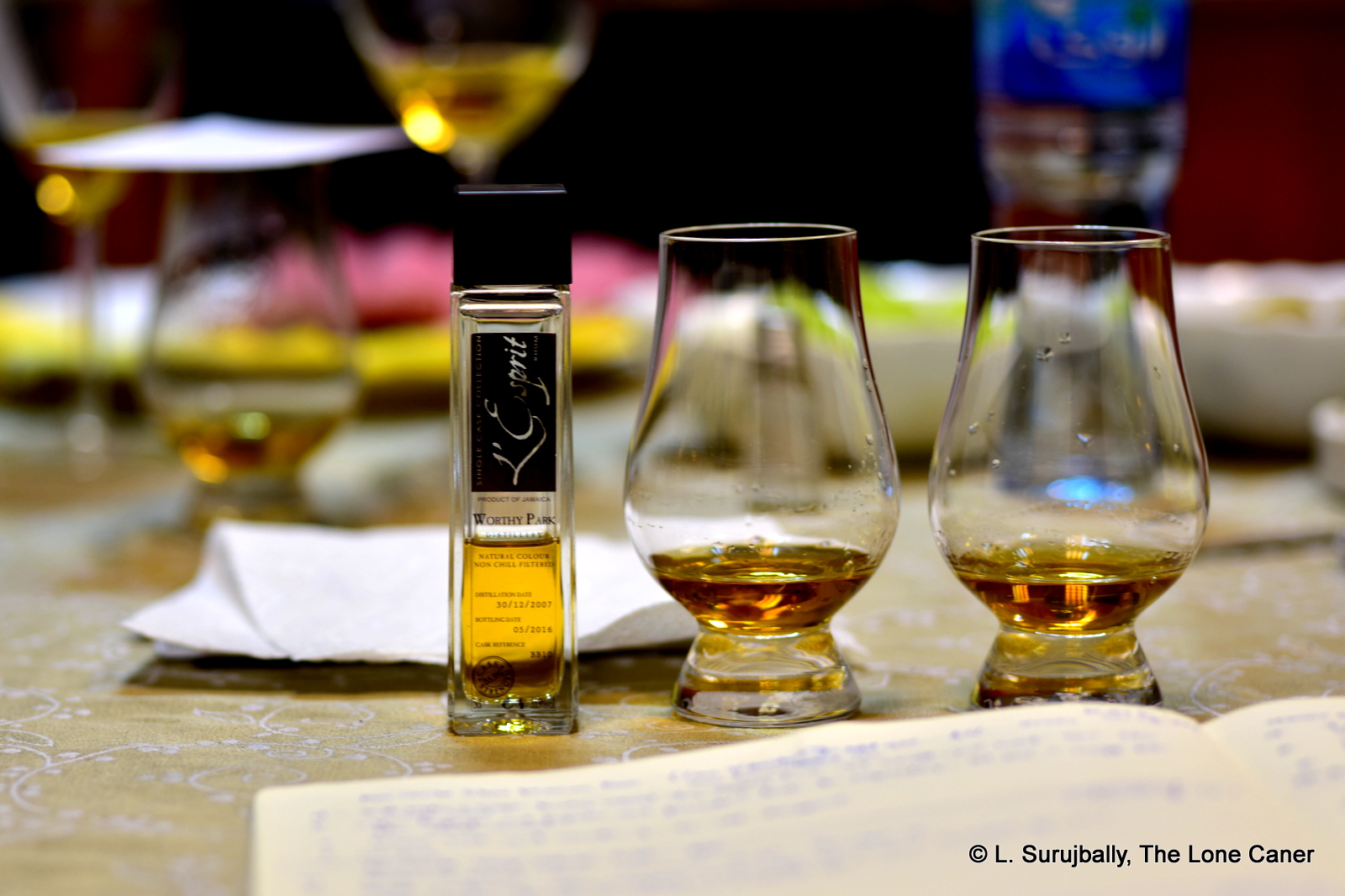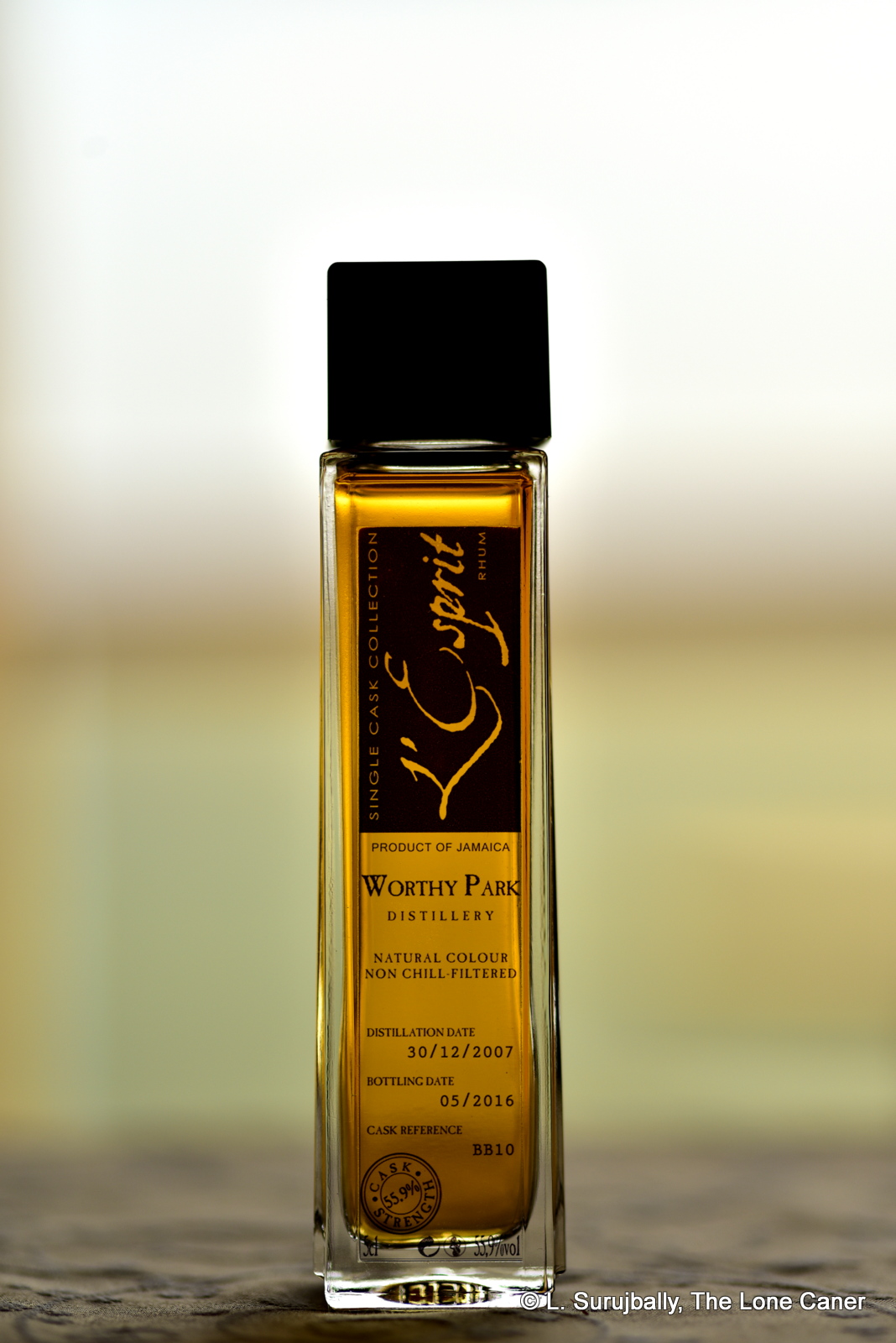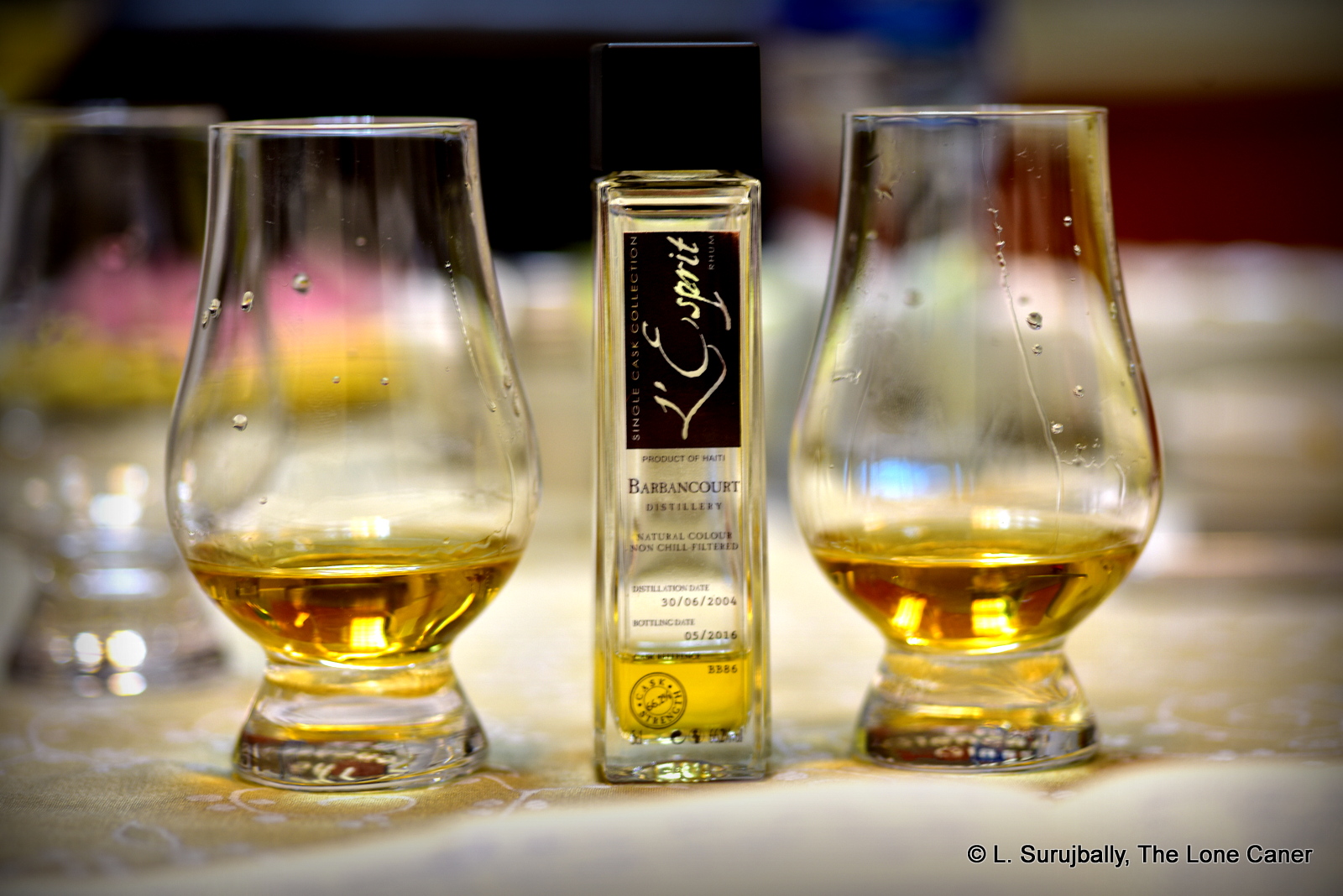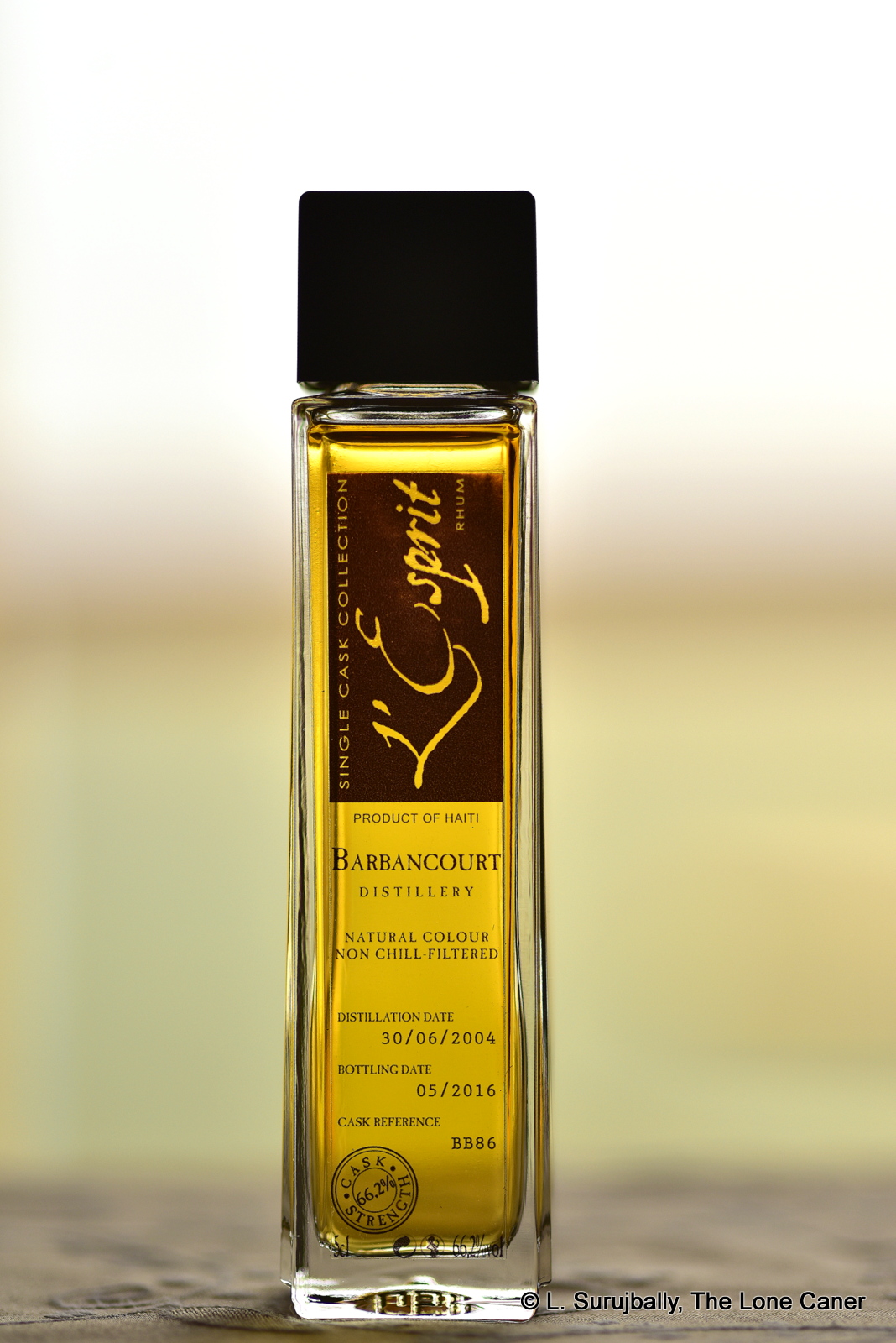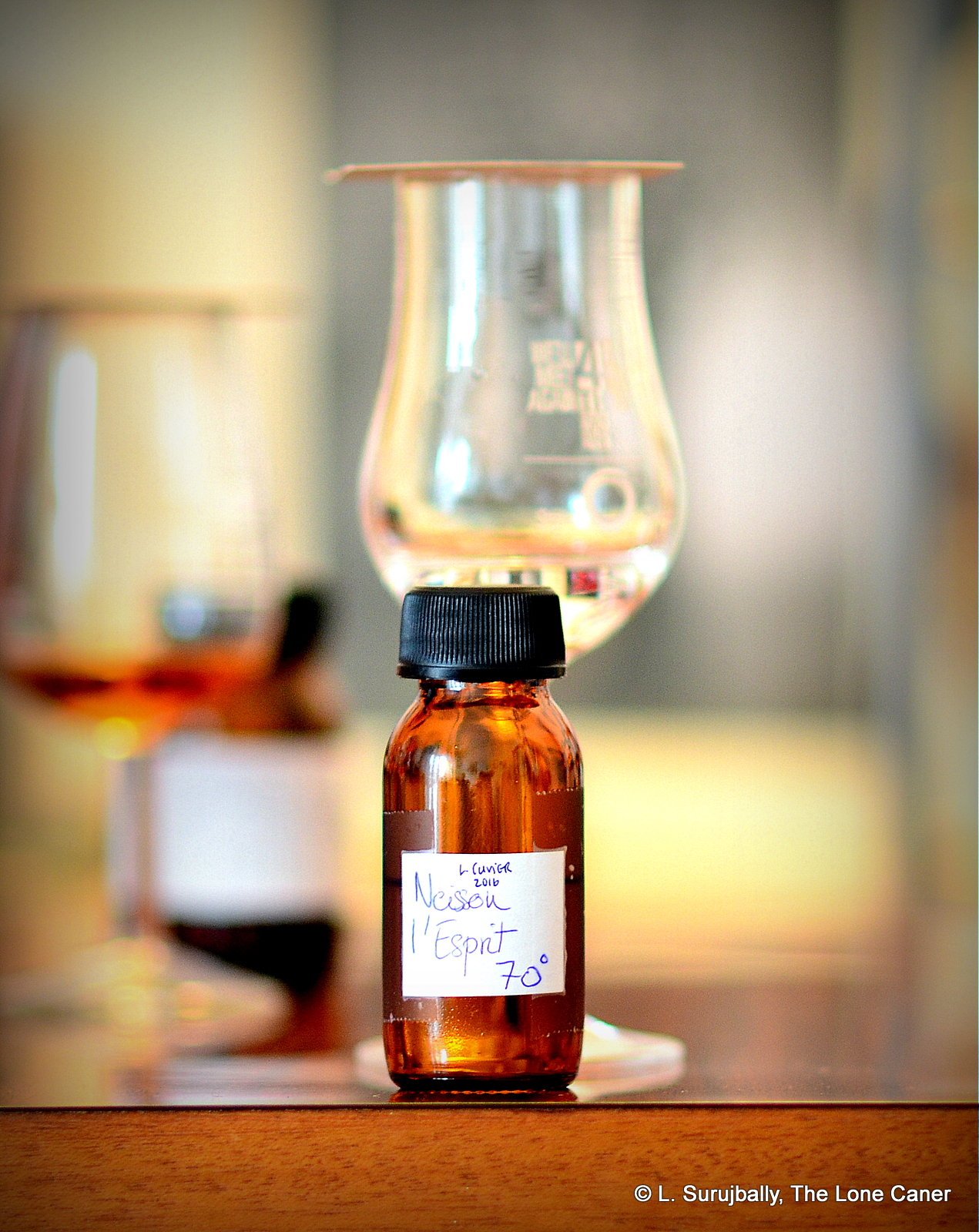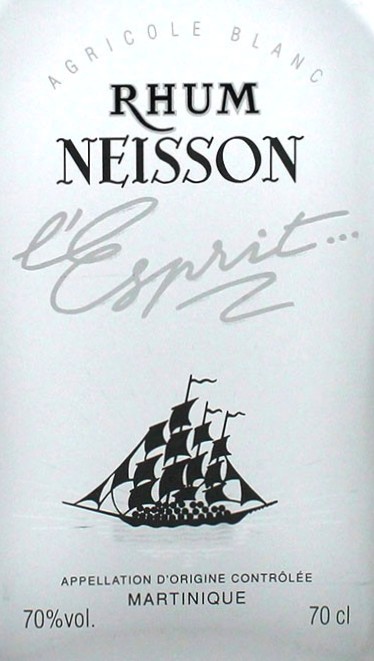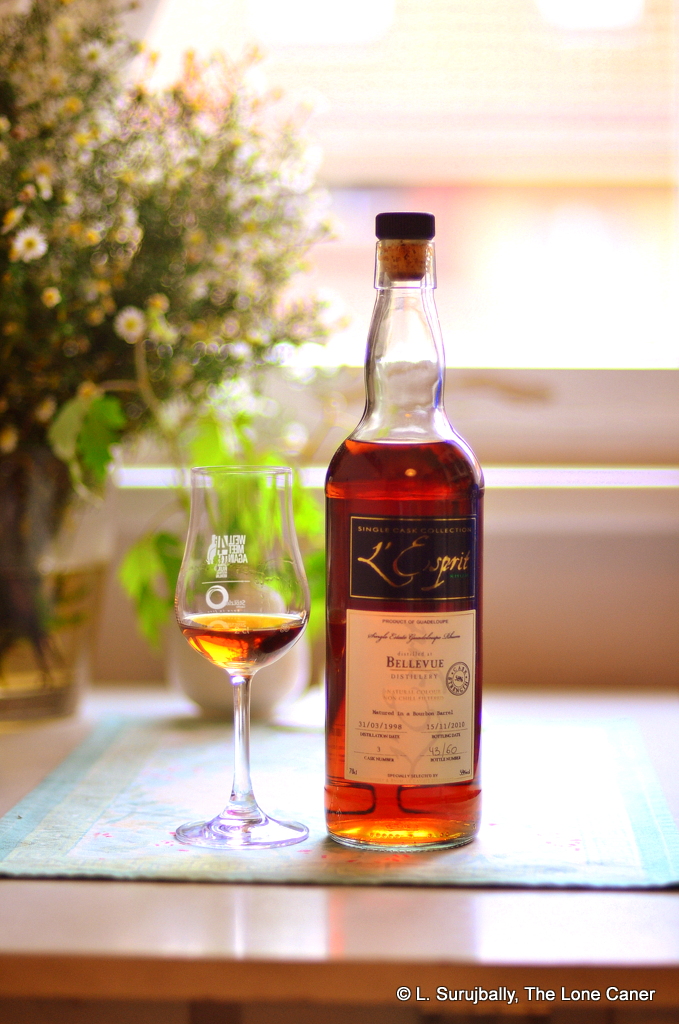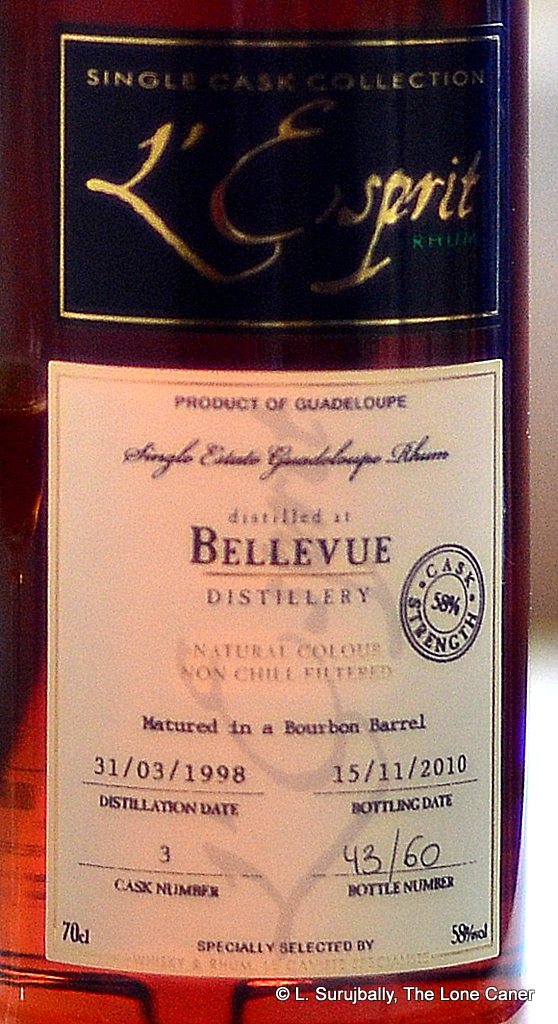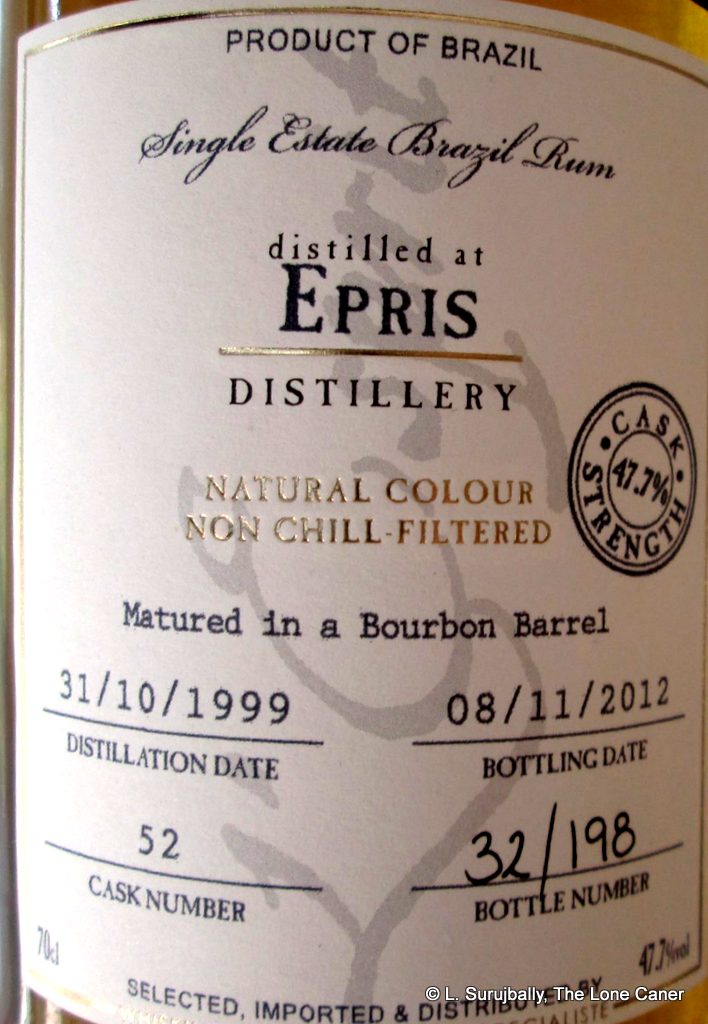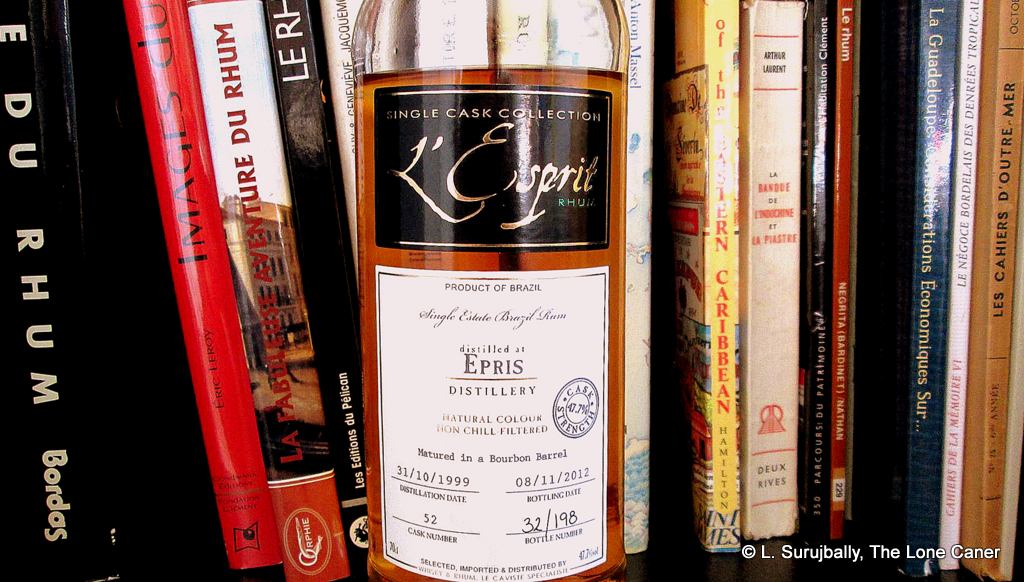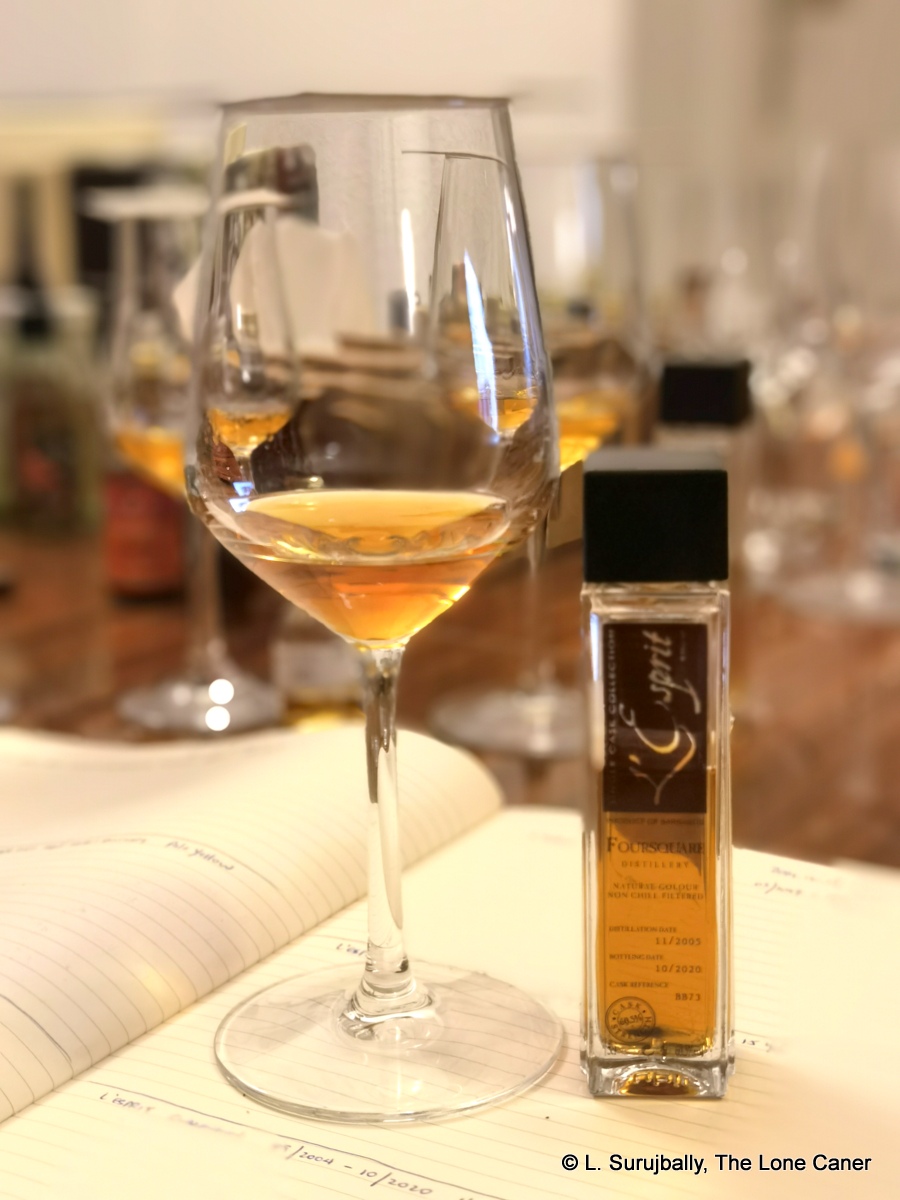 It’s not entirely clear why the little Brittany-based independent bottler L’ESprit – for which I have retained an enormous fondness over the years – advertises so little and keeps such a low profile. One never sees them at rum festivals, Tristan Prodhomme is practically unknown among the pantheon of small-company personalities, the company is more wedded to whisky than to rum…and yet the rums this one little outfit does release have a really good track record, people do treasure the ones they get and I would always take a second look myself, if one crossed my path: it’s one of the few indies whose wares I actively seek out and keep an eye open for.
It’s not entirely clear why the little Brittany-based independent bottler L’ESprit – for which I have retained an enormous fondness over the years – advertises so little and keeps such a low profile. One never sees them at rum festivals, Tristan Prodhomme is practically unknown among the pantheon of small-company personalities, the company is more wedded to whisky than to rum…and yet the rums this one little outfit does release have a really good track record, people do treasure the ones they get and I would always take a second look myself, if one crossed my path: it’s one of the few indies whose wares I actively seek out and keep an eye open for.
L’Esprit has, since its inception, gone through the whole gamut of what’s possible: they have released aged and unaged rums, standard strength or still strength, represented pretty much all the major rum producing countries out there (and a few minor ones), and in a nice touch, sometimes issue the same rum at two different strengths – standard and full proof. Today’s rum comes from Foursquare: it’s the usual pot-column blend characteristic of the famed distillery, distilled in November 2005, bottled in October 2020 (so a neat 15 years old), 60.5% and as far as I know, aged in ex-bourbon barrels.
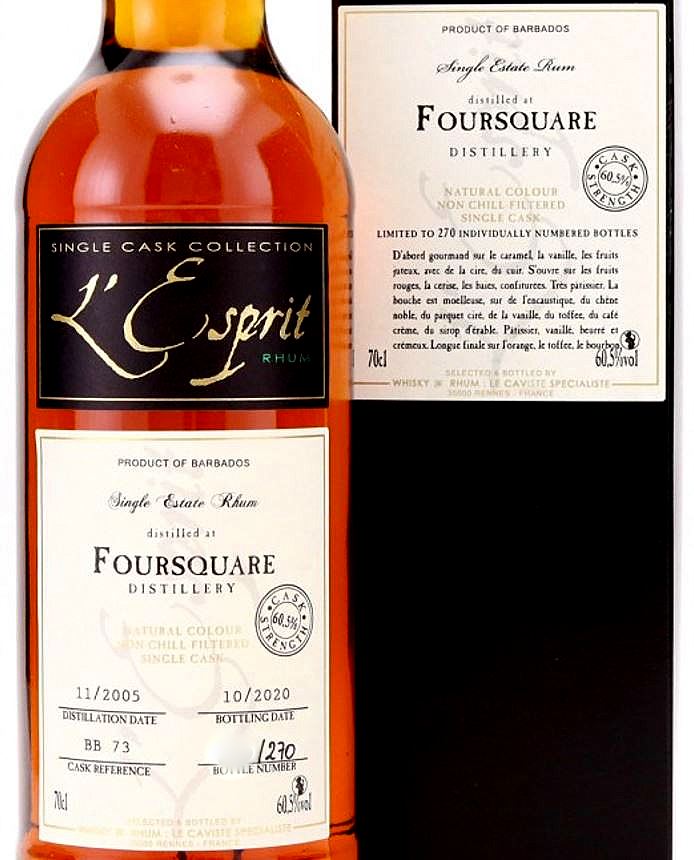 From those stats you can guess it’s a rum of furious and tasty brutality, and that’s not far off. The nose lunges from the bottle in an initial attack of pungent nutty and fruity notes, very intense. It is, one should note in passing, extremely nice too; it follows up with an uppercut of caramel, salt, acetones and the boiling scent of an “under final touch ups” stage of a new house in the hot summer — acetones, plastic turpentine and floor wax (clearly more pot still in action here). Then it seems to want to calm down and more restrained aromas come through – strawberries, unsweetened chocolate, tinned fruit syrup, dark honey, leather and port infused damp tobacco. That’s quite a lot for any rum to be providing, no matter who makes it.
From those stats you can guess it’s a rum of furious and tasty brutality, and that’s not far off. The nose lunges from the bottle in an initial attack of pungent nutty and fruity notes, very intense. It is, one should note in passing, extremely nice too; it follows up with an uppercut of caramel, salt, acetones and the boiling scent of an “under final touch ups” stage of a new house in the hot summer — acetones, plastic turpentine and floor wax (clearly more pot still in action here). Then it seems to want to calm down and more restrained aromas come through – strawberries, unsweetened chocolate, tinned fruit syrup, dark honey, leather and port infused damp tobacco. That’s quite a lot for any rum to be providing, no matter who makes it.
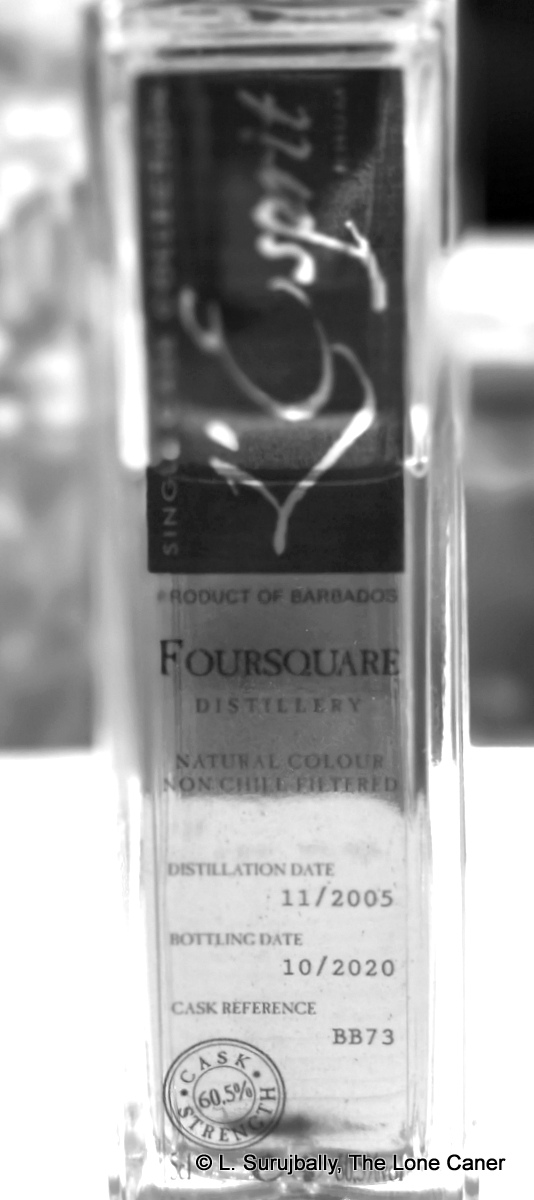 Clearly slowing down is not in this bottle’s bag of tricks: it continues to go strongly, like a bat out of hell, on this and every subsequent tasting (the glass is with me for the best part of a full day): it’s sweet, dry, aromatic, tasty. Green peas, syrup again, pears, stewed apples, tinned peaches, which is all pretty much what one could expect. But it does have some kinks as well, tastes that are somewhat odd — pleasant enough but almost unfamiliar, the way these components come together. Plastic, kerosene (just a touch), balsamic vinegar, mangoes in a very hot pepper sauce, that kind of thing. The edge and savagery is always just behind the sweet and more aromatic side of the profile, waiting to pounce if you treat it with anything less than respect. It all leads to a medium short finish (which, admittedly, is surprising for something that has to this point been going full steam), with not a whole lot more. Fleshy stoned fruits, some caramel and vanilla, strawberries, and the glue and wax make a short bow before scampering back offstage.
Clearly slowing down is not in this bottle’s bag of tricks: it continues to go strongly, like a bat out of hell, on this and every subsequent tasting (the glass is with me for the best part of a full day): it’s sweet, dry, aromatic, tasty. Green peas, syrup again, pears, stewed apples, tinned peaches, which is all pretty much what one could expect. But it does have some kinks as well, tastes that are somewhat odd — pleasant enough but almost unfamiliar, the way these components come together. Plastic, kerosene (just a touch), balsamic vinegar, mangoes in a very hot pepper sauce, that kind of thing. The edge and savagery is always just behind the sweet and more aromatic side of the profile, waiting to pounce if you treat it with anything less than respect. It all leads to a medium short finish (which, admittedly, is surprising for something that has to this point been going full steam), with not a whole lot more. Fleshy stoned fruits, some caramel and vanilla, strawberries, and the glue and wax make a short bow before scampering back offstage.
And that’s it. It’s the sort of neat pour that will leave you gasping a bit but also pleased to have been able to finish it. Overall it’s solid, and easily buffs the credentials of both producer and bottler to a brighter gleam. It has a seriously good nose with everything we like included, which is then sanded to a shine and bolted on to an anvil-heavy series of tasting notes that don’t seek to reinvent the wheel (or Foursquare), but simply present the best of which this particular barrel is capable. It’s like Tristan found a barrel he liked so much that it was only by the most supreme effort of will that he didn’t slap an ECS label on it – because that’s the only thing I can compare it to, and that’s what it really is. I call mine “Truculentus”.
(#1061)(86/100) ⭐⭐⭐⭐
